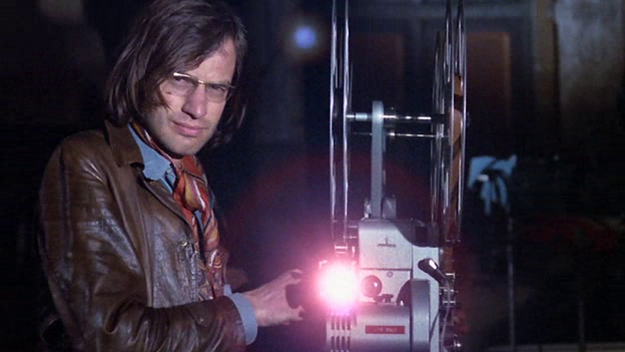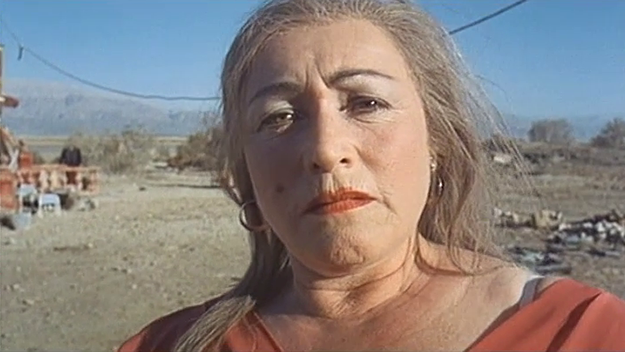Soundtracks compiles seven tracks written for five films from 1969 to 1970, one of which, Cream (1970) by Leonidas Capitanos, is presumed lost. Released in 1970, Soundtracks represents a turning point in the band’s early career, recorded just as they began to tighten their groove. Though a few of the tracks on the album were recorded much later than others, Soundtracks preceded the official releases of the band’s two best (and best-known) albums, 1971’s Tago Mago and 1972’s Ege Bamyasi. Soundtracks was also the first album to feature vocalist Damo Suzuki, a busker whom the band allegedly met on the streets of Cologne. It also features Mooney, who had been the band’s first vocalist before he suffered a mental breakdown and quit the band. Mooney, an American, would sing in English and employed a stream-of-consciousness technique when composing lyrics while Suzuki sang in three languages—English, Japanese, and German—and also improvised on the spot. The album benefits from both vocalists’ contributions, which alternate between the melodic and the delightfully off-kilter. The only English-language production represented on the album, Jerzy Skolimowski’s Deep End is the best-known film of the set, occasionally screening in repertory cinemas. In the film, 15 year-old Mike (John Moulder Brown) begins work at a bathhouse in London, where he meets and falls in love with Susan, played by a young Jane Asher. Mike’s love for Susan turns obsessive, fueled by what he learns of her life outside of work. Though Susan feels an affection towards Mike, his love is unrequited and his advances become more desperate as the film goes on. Apart from Cat Steven’s “But I Might Die Tonight,” Can’s “Mother Sky” is the only other music on the soundtrack.
A Big Grey-Blue Bird Director Jerzy Skolimowski was apparently a fan of Can’s “Yoo Doo Right,” a 20-minute track edited down from a six-hour jam session that appears on their 1969 album Monster Movie. Skolimowski requested that Can compose a similar piece of long, free-flowing music and the result was the 14-minute “Mother Sky,” which opens mid-blazing guitar solo and continues into a repetitive, tight and aggressive groove. The accompanying scene is a disorienting one, in which Mike searches for Susan in the streets of the red light district in Soho, only to discover a cardboard cutout of her nearly-nude figure standing outside a house of ill repute. The music stops and starts as Mike talks with a broken-legged prostitute, attempts to enter a private club, and buys one hotdog with mustard after another from an obliging street vendor. The scene has a bewildering effect, spurred by the often erratic camerawork and Can’s guitar-heavy, doggedly insistent score. Suzuki’s lyrics tell of madness while his voice, especially compared to Mooney’s on “You Doo Right,” is haltingly melodic. The earliest feature to appear on Soundtracks, Thomas Schamoni’s A Big Grey-Blue Bird (1969) is an enigmatic film involving five scientists with invaluable knowledge of the space-time continuum that has been erased from their consciousness, the memory of which can only be triggered by the key phrase, “a big grey-blue bird.” The film features fantastic sound design by Can’s Schmidt, full of experimental bleeps and blips that illustrate the sounds of surveillance as characters in the film spy on each other. In addition to these abstract improvisations, the recurrence of “She Brings the Rain,” with vocals by Malcolm Mooney, anchors the film with a sweet, traditionally structured song. The soundtrack mixes the band’s best experimental tendencies with their talent for accessible songwriting, finessing a point of entry into this multifaceted film. As Schmidt himself said of “She Brings the Rain,” “I thought this song sort of gives [the film] a kind of feeling and sentiment, a fundamental feeling which goes through the film so not everything is totally strange and, well . . . How would you say, ‘impenetrable’?” Compellingly romantic, “She Brings the Rain“ leavens this complicated film, layering a lighthearted and simplistic melody over complex imagery. Mädchen mit Gewalt or The Brutes (1969) is chronologically next; a film about the friendship between two skirt-chasing creeps, Werner (Klaus Löwitsch) and Mike (Arthur Brauss). Can’s “Soul Desert” chugs repetitively on the soundtrack, broken up across several scenes. After Werner rapes a woman (Alice, played by Helga Anders) while Mike watches, an acapella section of the song plays over a scene of the following morning where Alice sits, shocked and morose, alone in a gravel pit. Mike continues to violate Alice by bullying her, explaining in excruciating (and likely accurate) detail the shame that she will endure if she reported the rape to the police. The Brutes is an undeniably bleak film, ending with Alice’s decision not to report the crime. In title alone, “Soul Desert” represents a perfect fit while Mooney’s despondent vocals best illustrate Alice’s hopelessness. Throughout the film, every kick of the bass drum hammers home the theme of despair.
Recorded and mixed by Irmin Schmidt over the course of four or five mostly sleepless days, the soundtrack to Deadlock (1970) is one of the keyboardist’s favorites. Roland Klick’s take on the Euro-Western opens on a lone figure on the horizon carrying a metal suitcase and a gun. The figure stumbles forward in the frame as white noise slowly rises on the soundtrack, leading into “Deadlock” by Can. Michael Karoli’s guitar plaintively sears across the soundtrack as the lone man (Marquard Bohm) stumbles in the punishing sun. The title appears on the screen in perfect time with the music, followed by silence for the rest of the film’s opening. The title track repeats with the introduction of villain Mr. Sunshine, dressed in black boots, black hat and a cowboy’s duster coat. Three men; two outlaws and one miner fight over the suitcase filled with stolen cash in the sun-drenched desert, accompanied by two eccentric women; a wild-eyed nymphomaniac and her mute daughter. The music gives the film a sharp edge with its noisy segments while quieter acoustic themes fade right into the mix. “Tango Whiskeyman,” the most accessible track, works flawlessly as the jukebox single within the film, injecting Deadlock with a dose of diegetic pop and skipping, infuriatingly, at just the right moment. In interviews the members of Can emphasized the cooperative aspect of the group, insisting that the entire band wrote each song together. Their process for composing soundtracks, however, was less communal. Irmin Schmidt would act as the band’s intermediary, often in collaboration with film editor Peter Przygodda, communicating with the director while viewing clips from the film to be scored. Then he would describe the film to the band, who would compose the music together as always. Can composed many soundtracks in this way, with only a secondhand impression of the film provided by Schmidt. This accounts for the slight dissonance that sometimes characterizes the pairing of Can’s music with films that aren’t always in tune with the band’s unorthodox sounds and bizarre lyrics. Both vocalists’ improvisatory styles and in particular Suzuki’s multilingual ramblings left little room for comprehensible lyrics. At times, their music could be as “impenetrable” as Thomas Schamoni’s A Big Grey-Blue Bird, to use Schmidt’s words, though just as beautiful. Can singularly balanced the chaotic with the serene, separating their music from their krautrock peers, such as Guru Guru, Amon Düül II, Neu!, and Faust.
Deadlock In the summer of 2011, Brooklyn micro-cinema Spectacle ran a mini-retrospective of the Soundtracks album and screened two films, Roland Klick’s Deadlock and Thomas Schamoni’s A Big Grey-Blue Bird. Deep End is set to screen in August at the Metrograph as part of the theater’s A-to-Z series. But a full retrospective of their soundtrack work, though difficult to program, is long overdue. According to Irmin Schmidt‘s website, Can recorded 16 soundtracks from 1968 to 1991 for directors such as Wim Wenders and Samuel Fuller. Soundtracks barely represents a third of the band’s output as composers with nearly a dozen more films somewhere out in the ether, their sounds waiting to be rediscovered. Margaret Barton-Fumo is the editor of Paul Verhoeven: Interviews (University Press of Mississippi) and a longtime contributor to Film Comment.

